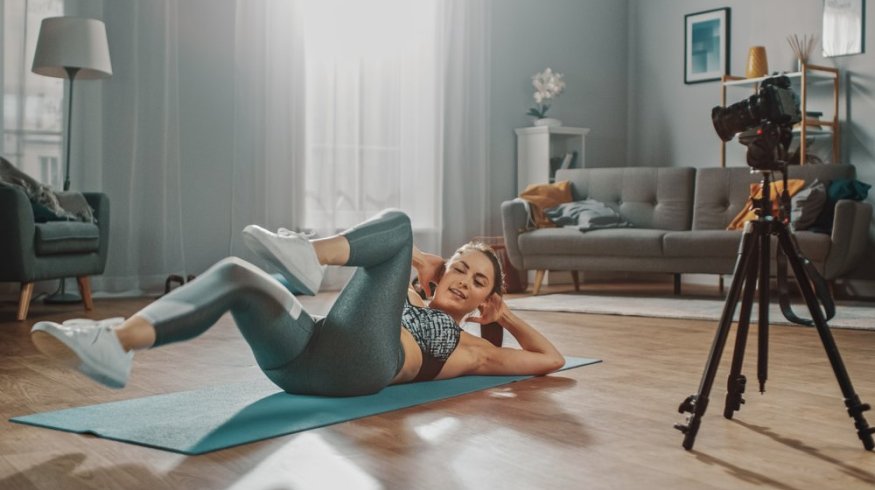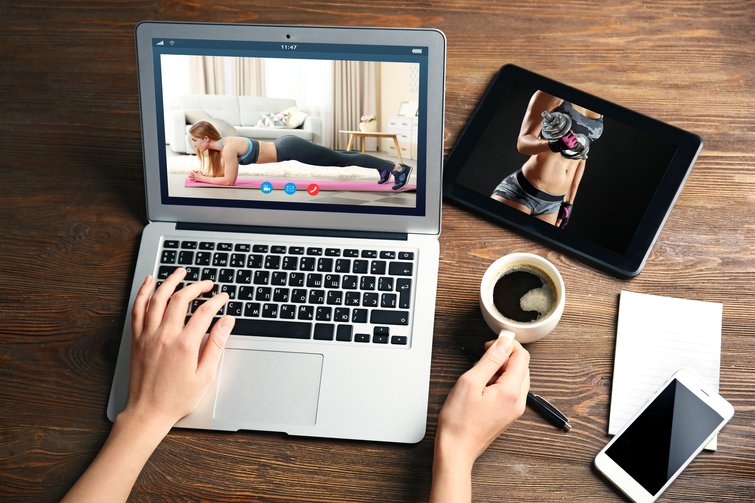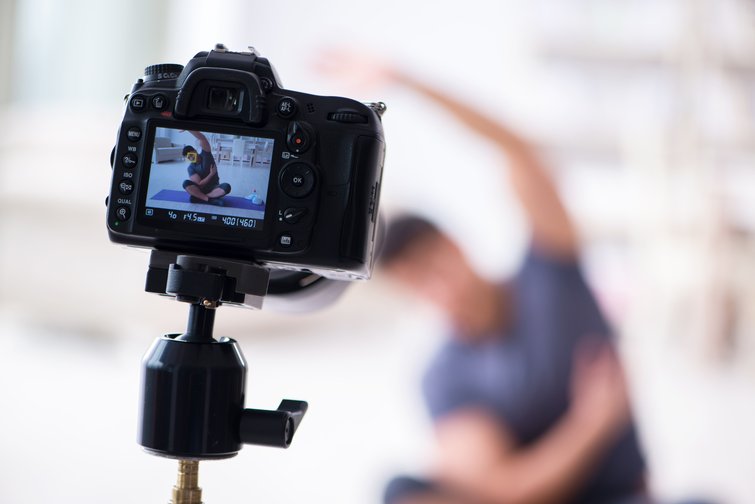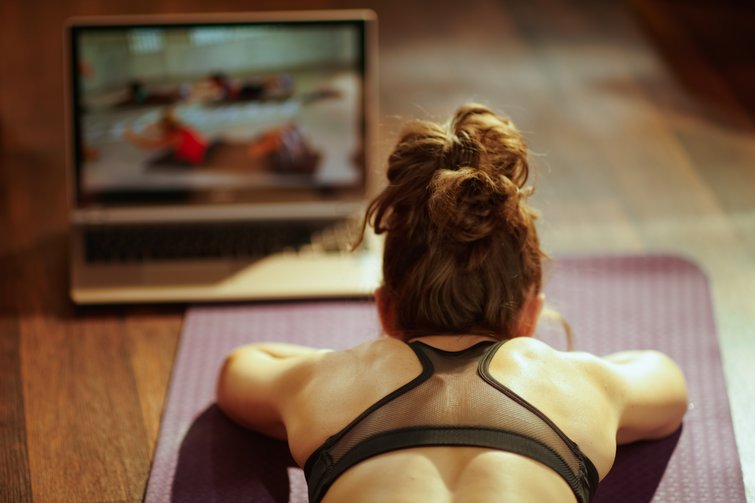
A Complete Guide to Shooting Workout Videos at Home
Whether you’re a fitness professional or a videographer working on fitness projects, these tips will help you create high-quality home workout videos.
While the film and video industry might currently be in flux, that doesn’t mean the need for video just vanished overnight. In fact, there are plenty of new opportunities out there for videographers who are willing to adapt and hustle.
One of these opportunities? Finding ways to use your video skills to help small businesses in industries that are suddenly without in-person customers or clients — like the health and fitness industry, which is ripe for a video reimagining in this era of social distancing.
If you work in health and fitness, or you’re a video pro who can help create content for a client, friend, or partner, here are some tips and tricks for conceiving, shooting, and editing guided home workouts by yourself. Let’s begin by thinking about everything you should capture (alongside the actual exercises) on a fitness shoot.
Decide what to shoot (in addition to the workout)

Prepare your audience for their workout by answering frequently asked questions. Image via Krakenimages.com.
First things first — obviously your fitness video isn’t a fitness video without including the workout. Remember a couple of things as you get started: First, experienced fitness pros sometimes have hundreds of exercise routines and combinations. And second, your audience consists of people with different needs and skills. For every beginner that’s trying to make a positive change, you’ll have someone looking to add to an advanced fitness lifestyle. Having a content channel that has something for everyone reaches a wider audience and creates sustainability.
With that out of the way, there’s more to a fitness video than the workout. Here are some things to consider when you start filming or live streaming.
- Focus on mini-workouts under five minutes in length. The rule of thumb is to get your viewer to a place where they’re sweating, but not exhausted.
- Provide valuable tips that speak to the viewer’s entire fitness regimen, eating habits, and personal hygiene.
- Keep the viewer engaged by pinpointing common technical mistakes related to the exercises you’re shooting, and explain how to overcome them.
- Field fitness questions from your audience and answer them on camera.
Now let’s look at how to establish the tone of your fitness videos in a way that keeps viewers coming back.
Develop an engaging tone

Devise a plan of action prior to filming. Image via ORION PRODUCTION.
People need to trust you. They want to be comfortable and feel like they’re in the hands of an expert. It’s not just the footage that has to look professional. The entire experience has to be dripping with authority. You can accomplish all of this by thinking about the overall setting of your videos, from the emotional flow to how you present the moves.
Think about the emotional state you’d like to convey. In fitness videos, the best hosts are excited and energetic. Unfortunately, so are the worst hosts. Too much enthusiasm may be a turnoff, while too little may be boring. Find your sweet spot by sharing (through personality and energy) exactly what it is that pushes you to stay fit.
Practice your moves before going on air. A couple of dry runs are better than none. Again, you’re the expert. You want to move with purpose. Execute confident, consistent moves that are easy to follow, and think about pacing as you move between exercises.
On the production side of things, consider eliminating all potential distractions, like noises and colorful backgrounds in your setting. You want your viewer to focus on the host. You don’t want them thinking about a family photo on your back wall instead of staying present during the workout.
Don’t hold the camera; handheld videos are shaky, which is disorienting for the viewer. And remember to have the host, whether it’s you or someone else, practice verbalizing the moves, instructing clearly and patiently. The host has probably done these routines a thousand times — now they have to do it all (and do it well) while explaining every step.
Now that you’ve identified the info and tone you’d like to share in your fitness video, it’s time to plan the shoot.
Plan an efficient shoot

Arriving at the scene well-prepared will only heighten the viewing experience. Image via Africa Studio.
As someone who’s spent a great deal of my career in the “shreditor” role of producer, shooter, and editor, one of the first things I can tell you right off the bat — planning is your best tool. It’ll also help you immensely if your workout host (whether it’s you or someone else) isn’t experienced with being on camera.
Simply put, leave nothing to chance. There should be no “we’ll figure it out when we get there.” Make a plan, write a script, develop a shot-list — figure things out first!
It’s time to make your major creative decisions. Ask yourself:
- Is this all going to be one shot?
- Will there be an intro? An outro? Separate sequences and segments?
- How many camera angles do I want? Should these be shot at the same time or separately?
- What do I want the final product to look like? What will this edit need?
- What audio options do I have? What type of music or soundtrack do I want?
Now that you’ve got your shooting plan, let’s move to your camera setup.
Choose the right camera setup

Camera quality and placement affects all aspects of production, including lighting, sound, and presentation. Image via Elnur.
To answer several of those questions above, you first need to look into your camera and set up your shot (or shots). At the very least, I’d recommend breaking up your video into segments, even if you’re using a static shot for the full coverage. This way, you’ll be able to stop and restart at specific points, rather than completely resetting every time a flub occurs.
We’re lucky to be living in a time of great camera technology. Creating content that is only going to live online — whether on YouTube, Vimeo, Facebook, Instagram, Twitch, Twitter, whatever — means you don’t have to shoot broadcast or 4K quality (although you certainly should if you can).
A digital mirrorless or DSLR camera that can shoot at least Full HD would be a major step up from shooting with a smartphone or laptop camera. However, be sure to check max recording time and data storage options — both can max out with many prosumer digital cameras if you’re recording long-form videos.
Finally, be aware of things like lighting, shadows, composition, and presentation of your set when deciding on your shots. Here are some great articles to read up on that can help:
- What Do Filmmakers Mean When They Refer to Composition?
- Cinematography Tips: Mastering Foreground, Middleground, and Background
- Back to Basics: The Rule of Thirds in Filmmaking
Publishing traditional video content is a great way to build a channel, promote a business, and release workout compilations that can be downloaded as a set. However, if you’re looking to provide live-streaming home-workout content, you’ll need a different workflow. No worries — we’ve got you covered below.
Live-streaming your fitness content

Consider investing in a live streaming-ready camera and select music tailored to your workout. Image via Alliance Images.
If you’re interested in live streaming, check out our list of the best live-streaming-ready cameras, as well as a curated playlist specifically tailored for workout videos. These are actually great resources for all manner of workout videos — live or traditional.
Some of your best options for “broadcasting” directly to a streaming platform include YouTube, Vimeo, Facebook, or Twitch. They all have their own specifications, but don’t be daunted — these days, the sites make it a breeze to learn the ins and outs of publishing video content.
Now that you’ve decided what style of video content you’re creating — prerecorded or live — it’s time to look at something that impacts them both: the audio setup.
Nail your audio

Audio is key to the audience’s participation and level of enjoyment. Image via Niyaz Tavkaev.
You’ve got to take your audio seriously. Whether you’re guiding high-energy training over intense music, or setting a relaxing tone for yoga workouts, audio is vital to your audience’s ability to follow along and enjoy your content. It’s where those verbalization skills you practiced come into play, too.
The ideal sound setup will involve multiple audio sources which can be balanced out in the edit. Placing a lapel mic on your main subject is the best way to capture their instructions, but it can be tricky since movement can cause the body and clothing to create distracting noises.
Your second best option is to place a boom mic near your host. Ideally, you would use a C-stand to hang the mic above your subject. If you don’t have access to a stand or a boom, a standard camera-mounted shotgun mic works in a pinch. Just make sure to keep the camera as close to the subject as possible.
For additional options, here’s some excellent info about working with audio:
- The Indie Filmmaker’s Guide to Recording Audio
- 9 Things You Should Check Before Recording Audio
- Tutorial: Removing Audio Pops and Recording Audio Differently
One last step. Let’s look at your edit.
Edit your video into one piece

Editing your video is an essential step in the overall process. Image via Victoria Yremina.
You’ve got a lot of great footage. Now you’ve got to turn it all into one piece of content. You can always start with the basic video editing tools like iMovie or Quick. But, if you’re open to exploring a more professional approach to video editing, these Adobe Premiere Pro tutorials are a great place to start. Need more precise guidance about video editing? Here you go:
- The Best Video Editing Programs: Final Cut Pro vs. Premiere Pro
- Top Alternatives to Premiere Pro — Free and Paid
- 3 Simple Tips for Stabilizing Smartphone Videography
Again, be sure to check out our curated playlist of royalty-free music tracks for fitness videos. They’ll raise your production value in a way that will make your edit really stand out.
There’s never a shortage of viewers looking to stay healthy and in shape while at home, and that means fitness content is a smart move. If you keep these tips and techniques in mind, your guided workout videos will be high-energy, fun, and extremely watchable.
Cover image by Gorodenkoff.
Check out these resources for content creators like you:





